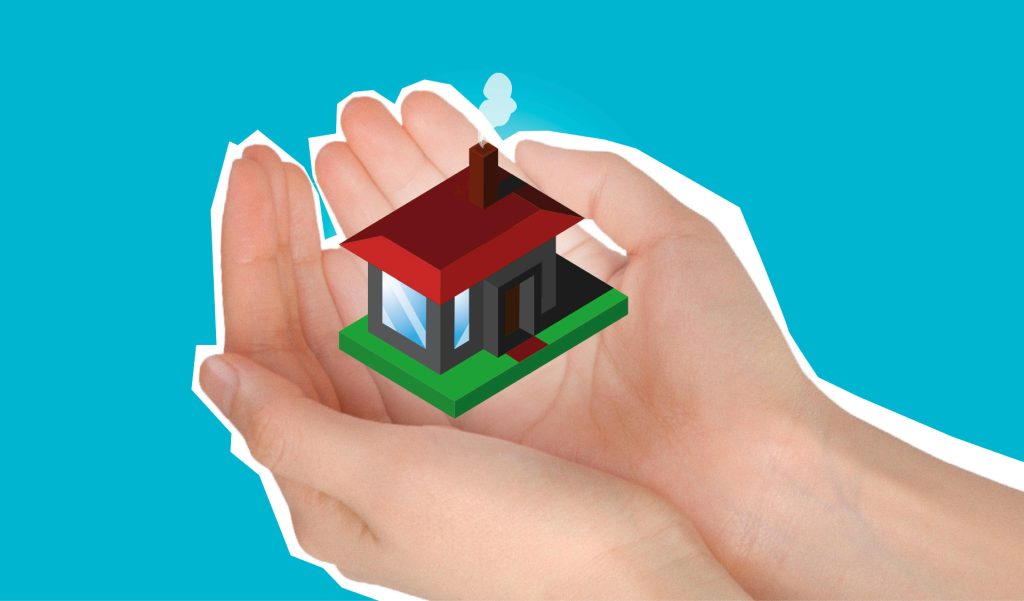Introduction
Whether it’s a leaking pipe in an apartment building, a faulty conveyor belt in a factory, or an IT issue in an office, maintenance requests are an inevitable part of operations. But how organizations log and track these requests determines whether issues get resolved quickly—or escalate into costly breakdowns and unhappy stakeholders.
Effective maintenance request management ensures that problems are reported accurately, assigned efficiently, and resolved in a timely manner. It also creates valuable data that can be used for preventive maintenance, budget forecasting, and compliance audits.

In this guide, we’ll explore the end-to-end process of logging and tracking maintenance requests—from how requests are submitted to the systems used for monitoring progress. You’ll learn best practices, tools, and real-world examples that make request tracking seamless and reliable.
Why Properly Logging and Tracking Requests Matters
Before we look at the how, let’s understand the why.
1. Faster Response Times
When requests are logged properly, the right technician or team can be assigned quickly.
2. Prevents Issues from Slipping Through the Cracks
A structured system ensures no maintenance request is overlooked or forgotten.
3. Improves Resource Allocation
Managers can prioritize requests based on urgency, cost, and impact.
4. Enhances Communication
Tenants, employees, or operators know their issue has been acknowledged and can track progress.
5. Provides Accountability
Clear records show who handled what and when, reducing disputes.
6. Supports Preventive Maintenance
Data from past requests can reveal recurring problems, enabling preventive strategies.
The Maintenance Request Lifecycle
Understanding the lifecycle helps us see where logging and tracking fit in.
- Submission: User reports an issue.
- Logging: The request is recorded in a system.
- Assignment: The request is routed to the correct technician or department.
- Tracking: Status updates are recorded as work progresses.
- Resolution: The issue is fixed, and the request is closed.
- Review & Data Capture: Feedback is gathered, and data is stored for future analysis.
How Maintenance Requests Are Logged
Logging is the first step—capturing the details of the request. This can be done in several ways, depending on the organization’s size and tools.
1. Manual Logs (Traditional Method)
- Paper Forms or Logs: A tenant fills out a form or an employee writes in a logbook.
- Phone Calls or Emails: Requests come through to maintenance managers manually.
Pros: Simple and cheap.
Cons: High risk of errors, delays, and lost requests. Not scalable.
2. Spreadsheets
Some organizations use Excel or Google Sheets to log requests.
- Requests are entered as rows with details such as issue description, date, and status.
- Conditional formatting or filters are used to track open vs. closed requests.
Pros: Low cost, easy to start.
Cons: Becomes messy as volume grows, limited automation, no real-time updates for requesters.
3. Maintenance Request Portals
Many companies now provide tenants, employees, or operators with a self-service portal.
- A web form or mobile app allows users to submit requests.
- Required fields ensure important details are captured (location, problem type, urgency).
Pros: Standardized data capture, less back-and-forth, requests auto-log into a database.
Cons: Requires investment in software.
4. Computerized Maintenance Management Systems (CMMS)
The most efficient approach is using a CMMS platform.
- Requests are logged directly into a centralized system.
- Users can attach photos, videos, or documents to requests.
- CMMS automatically generates a work order and routes it to the right technician.
Pros: Scalable, automated, integrates with other systems, detailed reporting.
Cons: Requires training and setup.
Key Information Captured When Logging Requests
Regardless of method, the following details should be captured:
- Requester’s Information (name, contact).
- Date & Time of submission.
- Location (building, room, equipment ID).
- Description of Issue (clear, concise, factual).
- Category/Type of Maintenance (plumbing, electrical, HVAC, IT, etc.).
- Urgency Level (critical, high, medium, low).
- Attachments (photos, videos, documents).
Example:
“Request ID #1245 – Submitted 01/12/2025 – Requester: J. Smith – Location: Building B, Room 202 – Issue: HVAC not blowing cold air – Urgency: High – Photo attached.”
How Maintenance Requests Are Tracked
Once logged, the focus shifts to tracking the progress until closure.
1. Manual Tracking
- Managers follow up verbally or with written notes.
- Status updates (open, in-progress, completed) are updated in logbooks or spreadsheets.
Problem: Easy to lose visibility, especially in larger operations.
2. Status Boards
Some teams use physical or digital status boards.
- Requests are listed on a board with status indicators.
- Common in small facilities and warehouses.
Problem: Not accessible remotely, prone to human error.
3. Tracking via Email Chains
In some organizations, updates are communicated via email threads.
Problem: Cluttered inboxes, hard to audit, no central history.
4. CMMS Tracking
Modern CMMS platforms automate tracking:
- Each request has a unique ID.
- Status updates are logged automatically as technicians update work orders.
- Requesters can check status in real time.
- Managers see dashboards with overdue or high-priority items.
Example of Status Flow:
- Submitted → Assigned → In Progress → Awaiting Parts → Completed → Closed.
5. Mobile Tracking
Mobile apps allow technicians to:
- Receive notifications instantly.
- Update job status on-site.
- Upload completion photos and notes.
This improves transparency and reduces delays in updates.
Best Practices for Logging & Tracking
1. Standardize Submission Forms
Ensure every request captures the same critical data.
2. Automate Routing
Use rules to assign requests automatically to the right technician or department.
3. Provide Transparency to Requesters
Allow requesters to track progress through portals or automated notifications.
4. Prioritize Requests
Not all requests are equal. Use urgency ratings to triage.
5. Maintain Centralized Records
One system of record avoids duplication and missing data.
6. Use Analytics for Improvement
Analyze request trends to reduce downtime and improve preventive maintenance.
Real-World Examples
Example 1: Residential Property Management
A tenant logs a leaking faucet via a web portal. The system auto-assigns it to the plumbing team, and the tenant receives updates via email.

Example 2: Manufacturing Facility
A machine operator reports abnormal vibration in a conveyor belt through a CMMS app. The request generates a work order, the technician updates status on mobile, and data feeds into predictive maintenance analytics.
Example 3: IT Department in a Corporate Office
Employees log hardware/software issues via a helpdesk portal. Each request is tracked with a ticket number and escalated based on SLA (Service Level Agreement).
Common Pitfalls in Logging & Tracking
- Incomplete Details – leads to delays.
- Requests Falling Through the Cracks – due to manual tracking.
- Lack of Prioritization – minor issues delaying critical fixes.
- No Feedback Loop – requesters don’t know if or when the issue is resolved.
- Over-Reliance on Paper/Email – inefficient for large organizations.
1. Automating Workflows
Automation eliminates bottlenecks by routing requests instantly:
- Rule-based Assignment: Requests tagged “plumbing” automatically go to the plumbing team.
- Priority Escalation: High-urgency issues (e.g., power outage) automatically notify managers and escalate in the queue.
- Auto-Reminders: Alerts sent to technicians if requests sit unresolved beyond SLA.
Benefit: Ensures critical issues are never delayed and technicians spend less time on admin tasks.
2. Integrating Maintenance Requests with Other Systems
Maintenance doesn’t happen in isolation. Integration adds efficiency:
- ERP Systems: Link requests with inventory data—if a part is needed, the system checks stock levels.
- HR Platforms: Requests can be tied to employee schedules or training records.
- Building Management Systems (BMS): IoT sensors detect anomalies and log requests automatically (e.g., HVAC fault).
3. Using Mobile-First Approaches
Mobile apps empower technicians and requesters:
- On-the-Go Logging: Staff or tenants submit issues with photos on-site.
- Technician Updates: Work status updated instantly, reducing delays.
- Offline Mode: Inspections in remote areas can be logged offline and synced later.
Example: In large campuses or manufacturing plants, mobile-first reporting ensures no request is lost due to paperwork delays.
4. Centralized Dashboards for Visibility
Dashboards allow managers to see:
- Total open requests.
- Average time to completion.
- Overdue or escalated tickets.
- Performance by technician or team.
This bird’s-eye view improves resource allocation and decision-making.
5. Building Preventive Maintenance Programs
Tracking requests isn’t just about fixing what’s broken—it’s about preventing breakdowns.
- Use request history to identify recurring problems.
- Schedule preventive maintenance (PM) before issues reappear.
- Track compliance with PM schedules.
Example: If HVAC complaints spike every summer, managers can schedule inspections and part replacements in spring.
6. Leveraging AI and Machine Learning
AI is reshaping maintenance tracking:
- Predictive Analytics: Forecast when equipment will fail based on past requests and sensor data.
- Natural Language Processing (NLP): Automatically categorize requests from free-text submissions.
- Smart Prioritization: AI scores requests by impact and urgency, reducing manual triage.
7. Creating a Feedback Loop
Once a request is closed, collect feedback:
- Did the requester feel the issue was resolved?
- Was it resolved on time?
- Was communication clear?
This adds a quality dimension to tracking—not just resolution but satisfaction.
KPIs for Measuring Maintenance Request Tracking Performance
To evaluate whether your logging and tracking system works, monitor these KPIs:
1. Average Response Time
Time from when a request is logged to when it is first acknowledged or assigned.
2. Average Resolution Time
Time from logging to closure.
3. SLA Compliance Rate
Percentage of requests resolved within agreed service-level timelines.
4. First-Time Fix Rate
Percentage of requests resolved without needing rework.
5. Backlog of Open Requests
How many requests remain unresolved over a given period.
6. Cost per Work Order
Helps track efficiency and budget management.
7. Recurring Request Frequency
Indicates whether underlying problems are being solved or just patched.
Real-World Case Studies
Case Study 1: Residential Property Management
Challenge: Tenants complained about slow response times.
Solution: Implemented a CMMS with tenant portal.
Result: Response times reduced by 40%, tenant satisfaction increased.
Case Study 2: Manufacturing Plant
Challenge: Frequent unplanned downtime due to late maintenance.
Solution: Integrated CMMS with IoT sensors. Requests logged automatically when anomalies detected.
Result: Downtime cut by 30%, maintenance costs reduced.
Case Study 3: Corporate IT Department
Challenge: Email-based tracking created chaos.
Solution: Switched to ticketing system integrated with Slack.
Result: 95% of requests now acknowledged within 2 hours, clearer audit trails created.
Common Challenges in Logging and Tracking
Even with modern tools, organizations face challenges:
- User Resistance – Staff may resist new digital tools.
Solution: Provide training and highlight benefits. - Incomplete Data Entry – Requesters may leave out critical details.
Solution: Make certain fields mandatory. - Poor Prioritization – Minor issues sometimes clog the system.
Solution: Use urgency categories and escalation rules. - Siloed Systems – Requests logged in one system but not visible in another.
Solution: Integrate systems for a single source of truth.

Future Trends in Maintenance Request Tracking
1. IoT-Enabled Self-Logging
Sensors automatically detect anomalies (temperature, vibration, leaks) and log maintenance requests without human input.
2. Voice-Activated Requests
Employees log requests hands-free via voice assistants (“Hey system, log a maintenance ticket for printer error”).
3. Blockchain for Transparency
Immutable records of maintenance requests for highly regulated industries (e.g., aviation, pharma).
4. Predictive Maintenance at Scale
AI-powered platforms predict failures before they happen, automatically generating work orders.
5. Augmented Reality for Technicians
Technicians view logged requests through AR glasses, see equipment history, and update status on-site.
Conclusion
Logging and tracking maintenance requests isn’t just an operational formality—it’s the backbone of efficient maintenance management. From manual logs to advanced CMMS platforms integrated with IoT and AI, the goal remains the same: capture issues clearly, track them transparently, and resolve them quickly.
Organizations that invest in structured, automated tracking systems not only improve response times and accountability but also unlock valuable data for preventive and predictive maintenance. In the long run, this reduces downtime, extends asset life, and keeps tenants, employees, or customers satisfied.
The future of maintenance request tracking lies in automation, integration, and intelligence—ensuring that no request ever slips through the cracks.
FAQs About Maintenance Request Logging and Tracking
1. What’s the difference between a maintenance request and a work order?
A request is the initial report of an issue. A work order is the formal assignment of that request to a technician with instructions and deadlines.
2. How can tenants or employees check request status?
Through portals, apps, or automated email/SMS notifications linked to the tracking system.
3. Do small businesses need a CMMS?
Not always. Small businesses may manage with spreadsheets, but CMMS becomes essential as request volume grows.
4. How long should records of maintenance requests be kept?
Depends on industry regulations—many organizations keep them for 3–5 years for compliance and audit purposes.
5. What are the signs of a weak request tracking system?
Frequent delays, unresolved requests, poor visibility for requesters, and repeated issues not addressed at root cause.
6. How can maintenance data improve preventive maintenance?
Analyzing recurring requests highlights patterns, enabling scheduled interventions before problems escalate.

